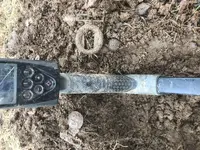vferrari
Silver Member
- Joined
- Jul 19, 2015
- Messages
- 4,910
- Reaction score
- 8,378
- Golden Thread
- 0
- Location
- Near Ground Zero for Insanity
- Detector(s) used
- XP Deus with HF/x35 Coils and Mi6 Pinpointer/ML Equinox 600/800/ML Tarsacci MDT 8000 GPX 4800/Garrett ATX/Fisher F75 DST/Tek G2+/Delta/Whites MXT/Nokta Simplex/Garrett Carrot
- Primary Interest:
- All Treasure Hunting
Thanks, Signal Line. Clive is very knowlegeable about detectors in general and especially about coil control technique. Bottom line, you are right. XP designed disc to be adjustable for the situation at hand. Using iron volume, I haven't seen a lot of difference in my experience running it 6 to 10 or in between so I mainly just leave it at 7 or 8. That doesn't mean there aren't situations that could benefit from dialing it down a bit, I just haven't really encountered those situations running in both mild and super hot soils. Thx again for the discussion. HH.




 but I am happy the way the conversation developed and morphed. I think some of the best learning opportunities happen that way.
but I am happy the way the conversation developed and morphed. I think some of the best learning opportunities happen that way.

